Heading out the door? Read this article on the new Outside+ app available now on iOS devices for members! Download the app.
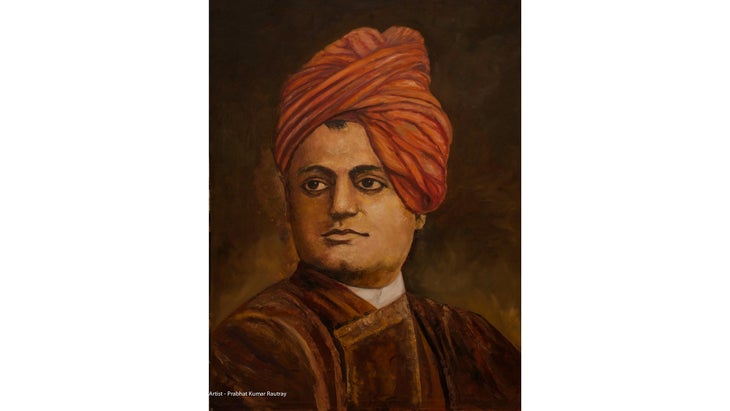
Yoga in the Late 1800s
Swami Vivekananda was the first Person to Bring Yoga to America
“In America is the place, the people, the opportunity for everything new,” wrote Swami Vivekananda before he left India in 1893. Vivekananda had learned from his guru, Sri Ramakrishna, that the world’s religions “are but various phases of one eternal religion” and that spiritual essence could be transmitted from one person to another. He set about to bring that transmission to America.
His first speech was at the World Parliament of Religions in Chicago. “Sisters and brothers of America,” he began, and the audience was on its feet, giving him a standing ovation.
Our love affair with the East was born, and so began a steady stream of Eastern ideas flowing west.
Learn more about Swami Vivekananda
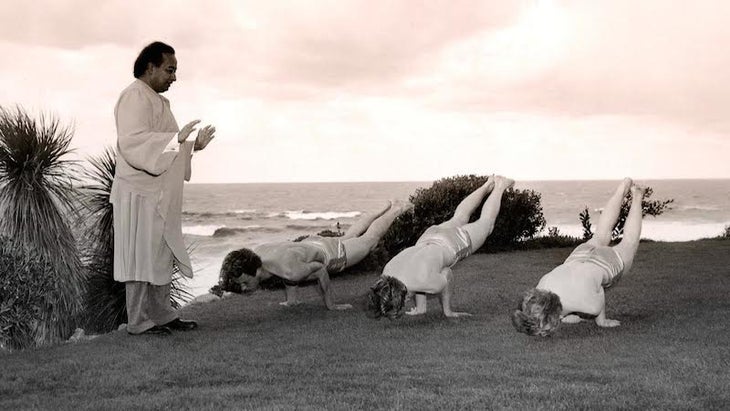
Yoga in the 1920s
Paramahansa Yogananda wrote the first modern spiritual classic
In 1920, Paramahansa Yogananda addressed a conference of religious liberals in Boston. He was sent by his guru, the ageless Babaji, to “spread the message of kriya yoga to the West.”
Although his early works had unpromising titles like Recharging Your Business Battery out of the Cosmos, his 1946 Autobiography of a Yogi remains a spiritual classic.
America Imposed an Immigration Banned on India
In 1924, the United States immigration service imposed a quota on Indian immigration, making it impossible for Easterners to travel to America. Westerners were forced to travel to the East if they sought after yogic teachings.
See also A Beginner’s Guide to the History of Yoga
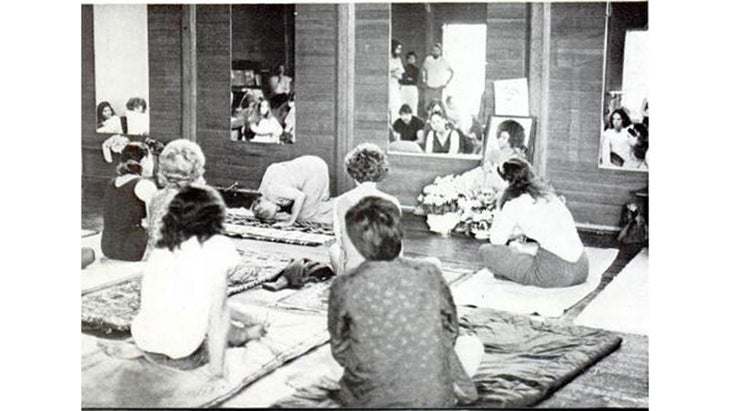
Yoga in the 1950s
Theos Bernard Wrote a Major Yoga Sourcebook
Theos Bernard returned from India in 1947 and published Hatha Yoga: The Report of a Personal Experience. It was a major sourcebook for yoga in the 1950s and is still widely read today.
Indra Devi Opened a Yoga Studio in California
That same year, Indra Devi opened a yoga studio in Hollywood. Her three popular books had housewives from New Jersey to Texas standing on their heads in their bedrooms.
She was the first Westerner to study with Sri Krishnamacharya and the first to bring his lineage to the West. Sri Krishnamacharya went on to become the grandfather of American yoga; his students included B.K.S. Iyengar, Pattabhi Jois, and T.K.V. Desikachar.
Richard Hittleman Pioneered Yoga on Television
The person who introduced more Americans to yoga than any other in those days was Richard Hittleman, who in 1950 returned from studies in India to teach yoga in New York.
He not only sold millions of copies of his books and pioneered yoga on television in 1961, but he influenced how yoga has been taught ever since.
Although he was a student of the sage Ramana Maharshi and very much a “spiritual” yogi, he presented a nonreligious yoga for the American mainstream, with an emphasis on its physical benefits. He hoped students would then be motivated to learn yoga philosophy and meditation.
The Baptiste Family Begins its Dynasty
Yoga was established on the West Coast in the mid-’50s with Walt and Magana Baptiste’s San Francisco studio. Walt’s father had been influenced by Vivekananda, and Walt and Magana were students of Yogananda. The family yoga dynasty continues today with their children, Baron and Sherri.
See also Why Hindu Mythology Is Still Relevant in Yoga
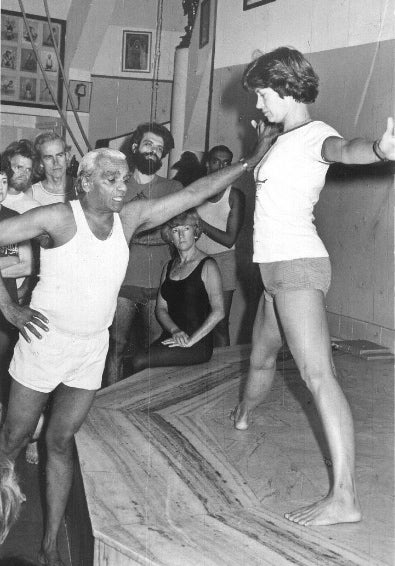
Yoga in the 1960s
Swami Vishnu-devananda Opens One of the Largest Networks of Yoga Schools
In 1958, Indian-born Swami Vishnu-devananda, a disciple of Swami Sivananda Saraswati, arrived in San Francisco, sponsored by the artist Peter Max.
His 1960 book, The Complete Illustrated Book of Yoga, became an essential guidebook for many practitioners. Dubbed by a colleague as “a man with a push,” he founded the Sivananda Yoga Vedanta Centers, headquartered in Montreal, one of the largest networks of yoga schools in the world.
Transcendental Meditation Spread Across America
Meditation and yoga exploded across America in the early ’60s, when an unassuming-looking yogi “came out of the Himalayas to spiritually regenerate the world.” Maharishi Mahesh Yogi’s Transcendental Meditation empire now claims 40,000 teachers and more than four million practitioners, with 1,200 centers in 108 countries.
B.K.S. Iyengar Influences How We View Anatomy
In 1966 B.K.S. Iyengar’s Light on Yoga was published in the United States, a book that is still considered to be the Bible of serious asana practice. In 1973, Iyengar was invited to Ann Arbor, Michigan to teach by Mary Palmer (mother of Mary Dunn). Nearly every Western teacher has been influenced by his emphasis on anatomical precision, many without even knowing it.
America Removed Indian Immigration Ban
A 1965 revision of U.S. law removed the 1924 quota on Indian immigration, opening our shores to a new wave of Eastern teachers.
Kirpalu Opens its Doors
In 1966 Amrit Desai founded the Yoga Society of Pennsylvania, and later Kripalu Yoga Ashram.
Swami Rama Breaks Medical Ground
Swami Rama amazed researchers at the prestigious Menninger Foundation in 1970 when tests showed he could control his autonomic nervous system functions including heartbeat, pulse, and skin temperature.
Swami Satchidananda Opens Woodstock Festival
In 1966, Swami Satchidananda, another of Swami Sivananda’s disciples, arrived in New York for a couple of days and ended up staying permanently. His Integral Yoga Institute now includes an ashram in rural Virginia and over 40 branches worldwide.
Satchidananda opened the Woodstock festival in 1969, echoing Vivekananda’s greeting of 75 years earlier: “My beloved sisters and brothers.” Looking like an aging hippie himself, with flowing hair and beard, he provided a living example of a life dedicated to spirit. It was just what many young people were hungering for.
Ram Dass Starts a Spiritual Quest
Ram Dass became another pied piper for American youth. The former Harvard professor left on a pilgrimage to India in the late ’60s as Richard Alpert; he returned with a guru and a new identity. His 1970 tour of college campuses and his book Be Here Now established the spiritual quest as a lifestyle for a new generation of seekers.
See also 7 Ways to Incorporate Yoga Philosophy into a Physical Flow
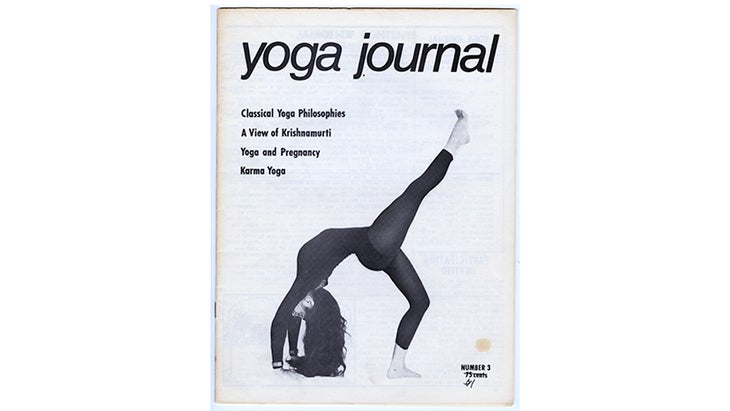
Yoga in the 1970s
By the ’70s you could find yoga and spiritual teachings everywhere.
Baba Hari Dass Provides Residential Programs
Near Santa Cruz, California, the silent sage Baba Hari Dass founded Mount Madonna to provide residential yoga programs.
Pattabhi Jois Exposes Ashtanga-Vinyasa yoga to America
In 1975 Pattabhi Jois made his first visit to the United States and set off the wildfire of Ashtanga-vinyasa Yoga.
T.K.V. Desikachar Brings Viniyoga to the West
Around the same time, T.K.V. Desikachar, son of the great master Sri Krishnamacharya, brought his Viniyoga to the West.
Yoga Journal Publishes its First Issue
And in 1975 the first issue of Yoga Journal was published: $500 was scraped together to print and distribute 300 typewritten copies. Little did the founders—Rama Jyoti Vernon, Rose Garfinkle, Judith and Ike Lasater, Jean Giradot, Janis Paulsen, and William Staniger—realize that their modest publication would become the magazine of record for yoga in the West.
As Yoga Journal expresses our gratitude to all of those pioneers who planted the seeds of yoga in America’s soil.
Holly Hammond works as a freelance writer and editor in Berkeley, California.